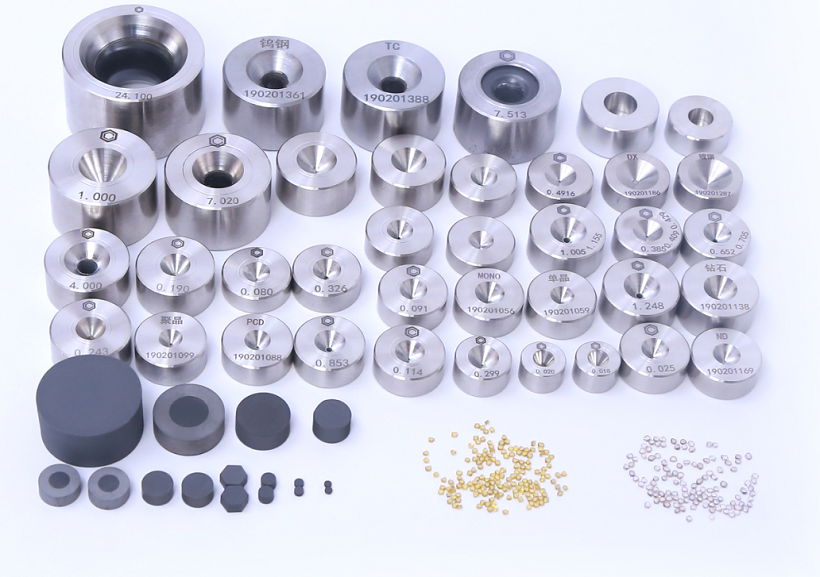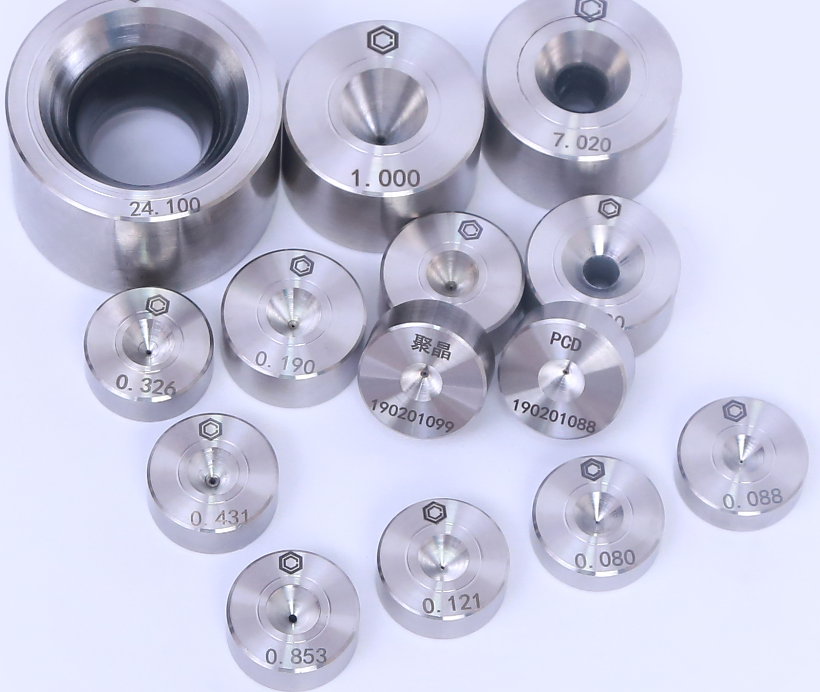1. Ensure wire drawing machine keep smoothly running
The surface of capstan,guide wheel should be smooth and flexible.
If found the capstan with groove, then need repair on time, otherwise also will affect dies life.
If found the capstan with groove, then need repair on time, otherwise also will affect dies life.
2.Good lubrication conditions are important for prolonging the dies life
It is necessary to check the lubrication index frequently, remove the copper powder and impurities from emulsion, so that it does not pollute the equipment and the die hole. If the lubrication failure, it must be replaced and clean in time.
3. Suitable Reduction ratio for Making Dies List
Adjust dies coefficient according to mechanical reduction ratio and slip coefficient of copper wire drawing machine, which can reduce the wear of drawing capstan and the loading of running machine. At the same time, dies life will be longer.
4.Produce copper wire drawing dies according to the drawing material and reduction ratio,
pay attention to the compression angle and sizing area.

The copper wire drawing die type is generally divided into a curve (ie, an R type series) and a straight type (ie, a cone type series).From the views of the wire deformation in the wire drawing mode, it seems that the curve type is better than the straight line type. This hole type is designed under the guidance of the “smooth transition” theory. The hole structure can be divided into “population” according to the nature of work. Five parts of “zone”, “lubrication zone”, “work zone”, “sizing zone” and “out of day zone”. The junction of each department requires “chamfering”, smooth transition, grinding the whole hole into a large one. A mold with a different curvature and a hole type can be applied at the time of drawing speed at that time. By the end of the 1970s to the early 1980s, as the speed of the cable was increased, the service life of the cable die became a prominent problem. In order to meet the requirements of high-speed wire drawing, T.Maxwall and E.G. Kennth of the United States proposed the “straight line” theory. The theory focuses on the lubrication and wear factors during the drawing process. It is pointed out that the improved linear drawing die hole type should have the following characteristics:
(1) The longitudinal section lines of each part of the hole type must be straight, and the straight working cone has the smallest pulling force;
(2) The intersection of the parts of the mold must be obvious, so that each part can fully play its role, avoiding the reduction of the actual length of the sizing area by the transition angle;
(3) Extend the height of the entrance area and the working area so that the wire enters the middle section of the working hole of the die hole, and the wedge shape formed by the inlet taper angle and the upper half of the working cone angle is used to establish a “wedge effect”, and the surface of the wire material is formed more densely. A strong lubricating film that reduces wear and is suitable for high speed drawing;
(4) The sizing area must be straight and of reasonable length. The sizing zone is too long, the friction of the wire is increased, and the wire is easily broken or broken after being pulled out of the die hole. The sizing zone is too short, and it is difficult to obtain a wire with stable shape, accurate size and good surface quality, and the die hole is also Will wear out too badly.
Through practical application, the wire drawing die designed by the linear theory has a service life of 3–5 times higher than that of the R-shaped wire drawing die.
Through practical application, the wire drawing die designed by the linear theory has a service life of 3–5 times higher than that of the R-shaped wire drawing die.
5.Polishing after each 3 months

(1)During long-term use of the copper wire drawing die, the mold wall is strongly rubbed and washed by the metal wire, which inevitably causes wear. The most common is the occurrence of an annular groove (dent) in the working area wire into the LJ. The appearance of the die hole is intensified, because the small core material of the core material which is peeled off due to looseness on the ring groove is brought into the working area and the sizing area of the die hole by the metal wire, plays the role of the abrasive, and the wire entering the die hole Then the wear of the die hole is aggravated like a grinding pin. If it is not replaced in time for repair, the ring groove will continue to accelerate and expand, making the repair more difficult, and even the crack may appear deep in the annular groove, so that the wire drawing die is completely broken and scrapped.
Due to the vibration of the wire, the area where the wire is first contacted in the zone of the wire drawing die first produces some slight annular wear, and then expands until the sizing zone, resulting in a serious drop in the surface quality of the wire and an increase in the wire size.
Due to the vibration of the wire, the area where the wire is first contacted in the zone of the wire drawing die first produces some slight annular wear, and then expands until the sizing zone, resulting in a serious drop in the surface quality of the wire and an increase in the wire size.
(2)It is known from experience that it is very economical to develop a set of standard standards and strengthen daily maintenance. Once any slight wear of the wire drawing mold occurs and the polishing is performed in time, the time taken to restore the drawing die to the original polishing state is short, and the hole shape of the wire drawing die does not change significantly.
So usually polishing after each 3 months or Slightly increase the diameter to meet drawing request.
